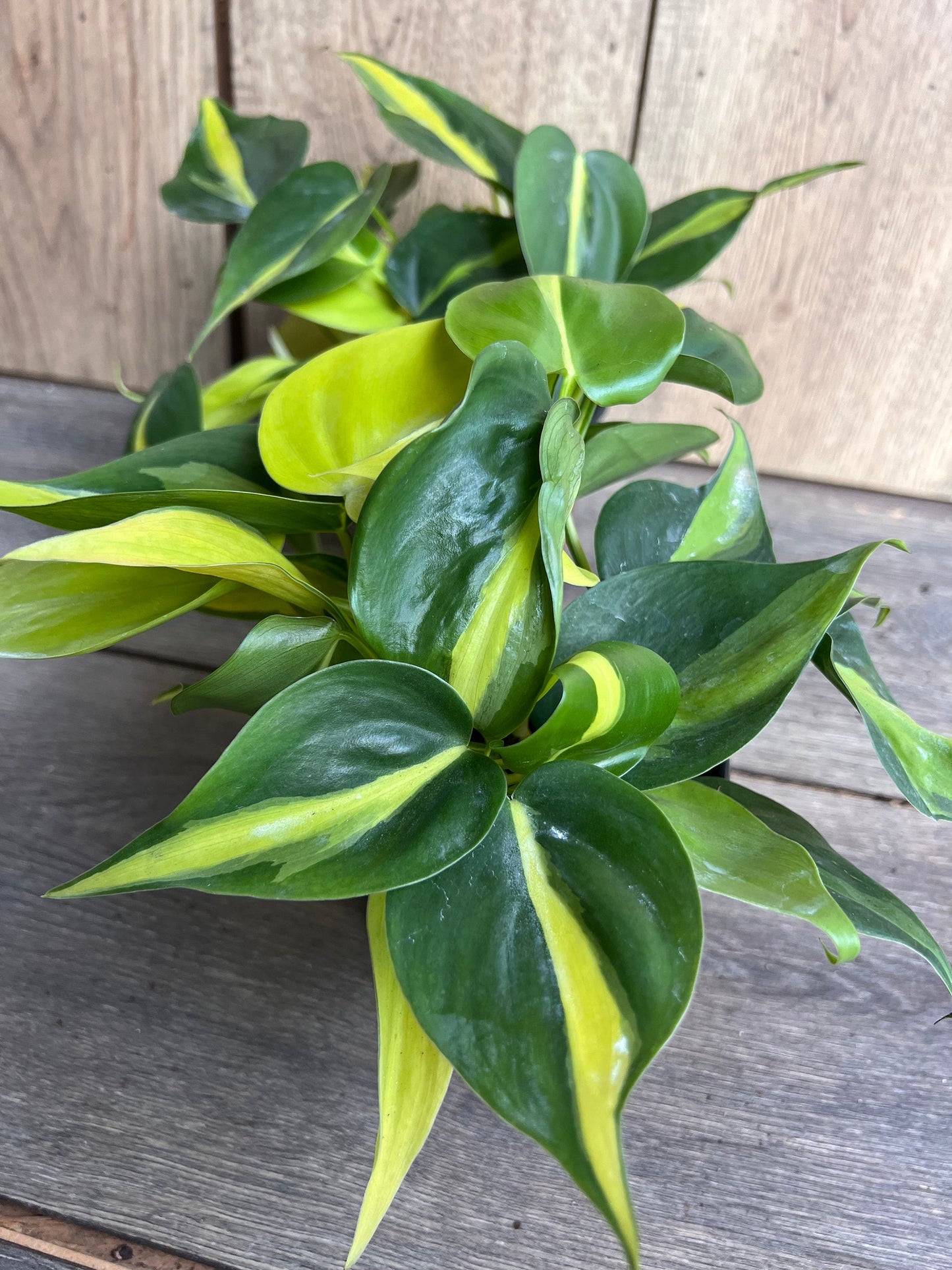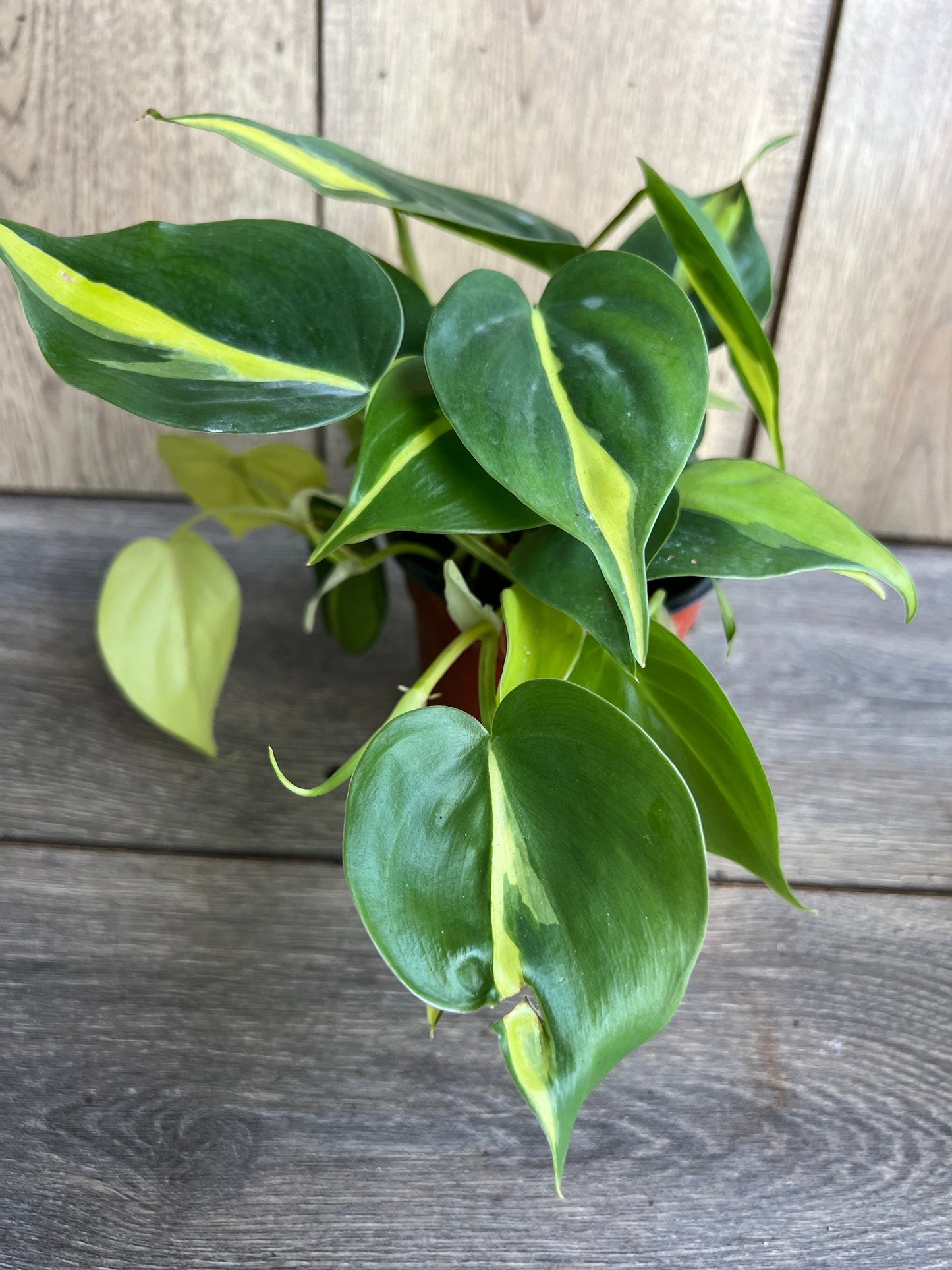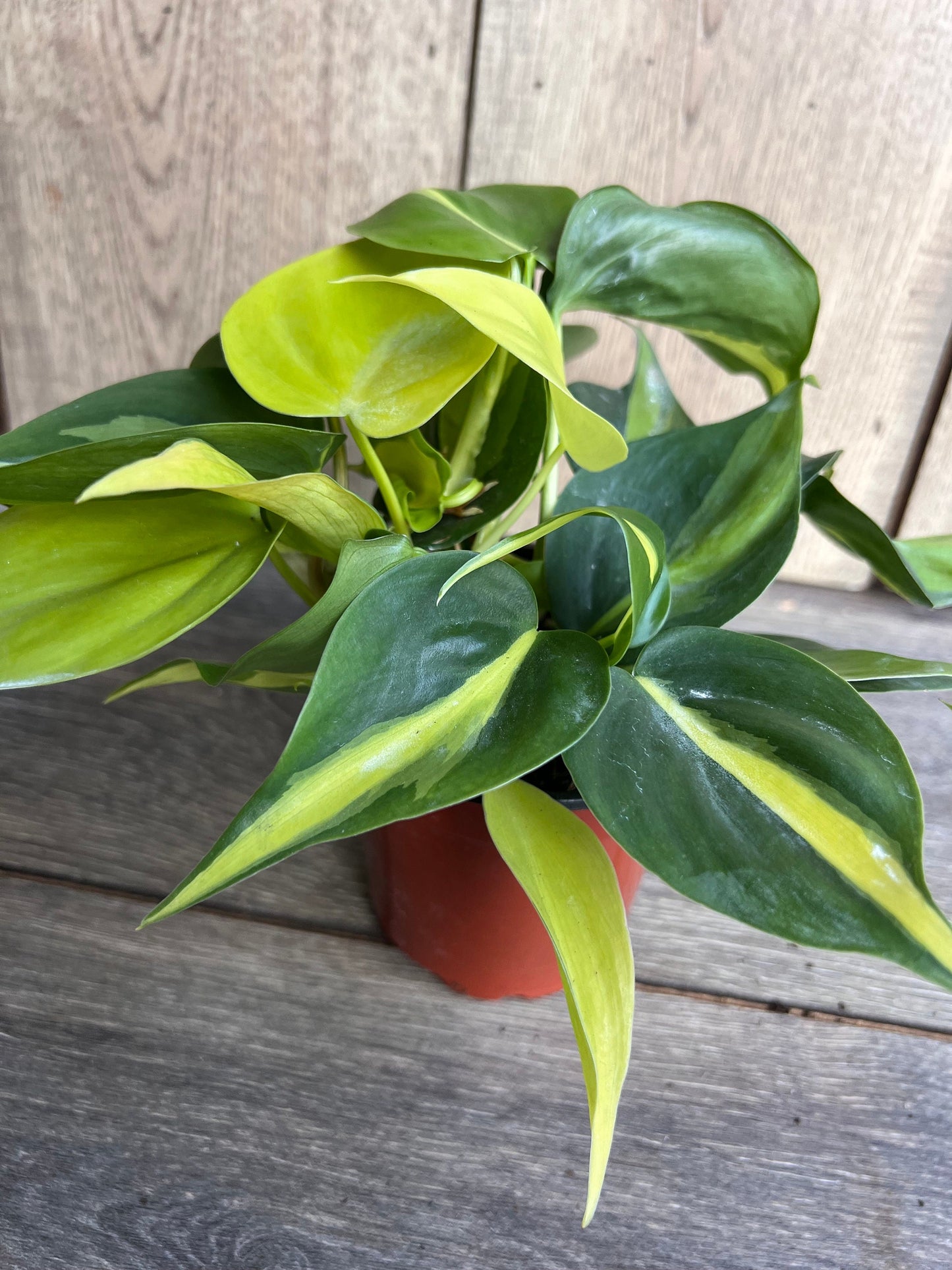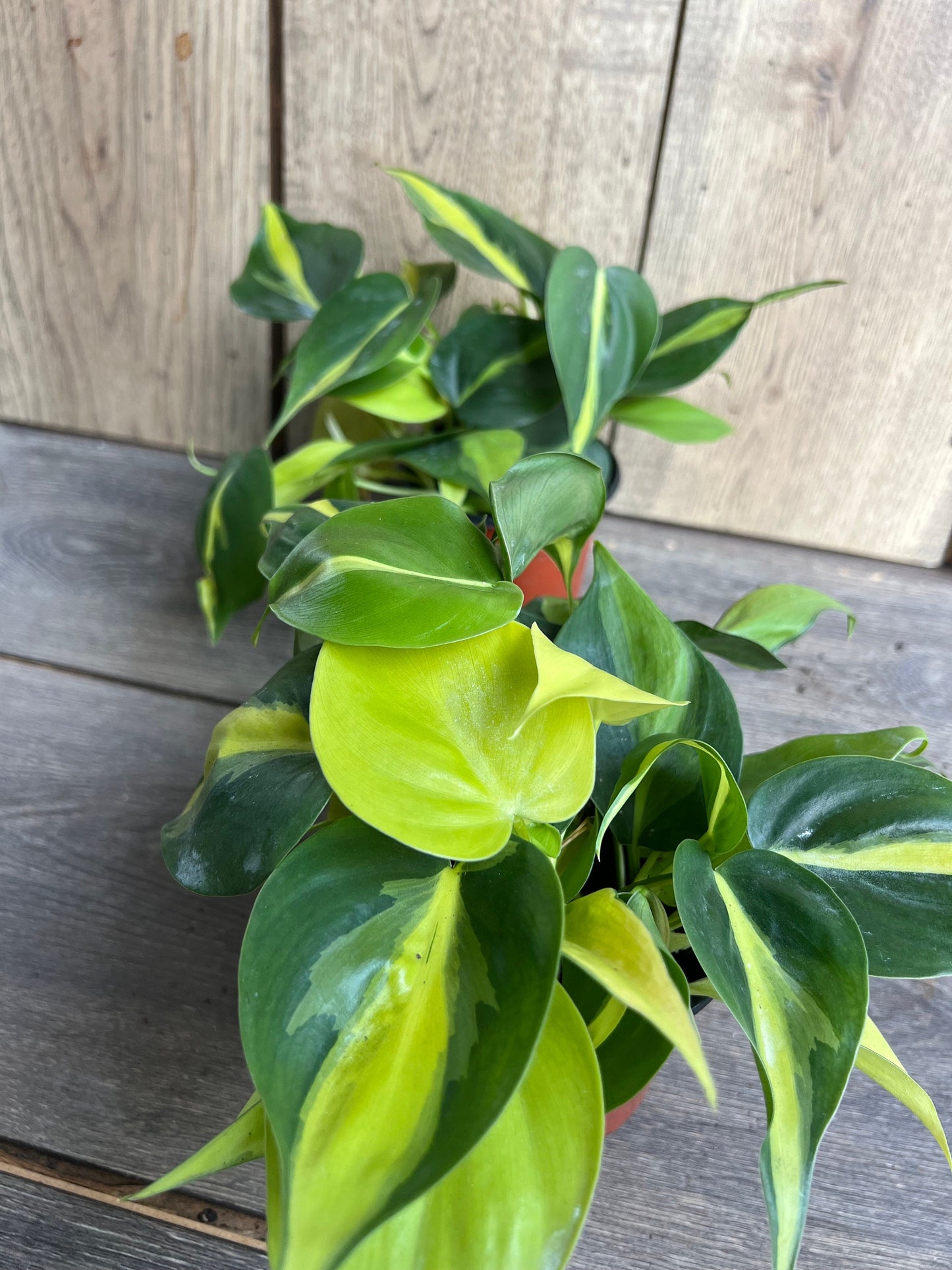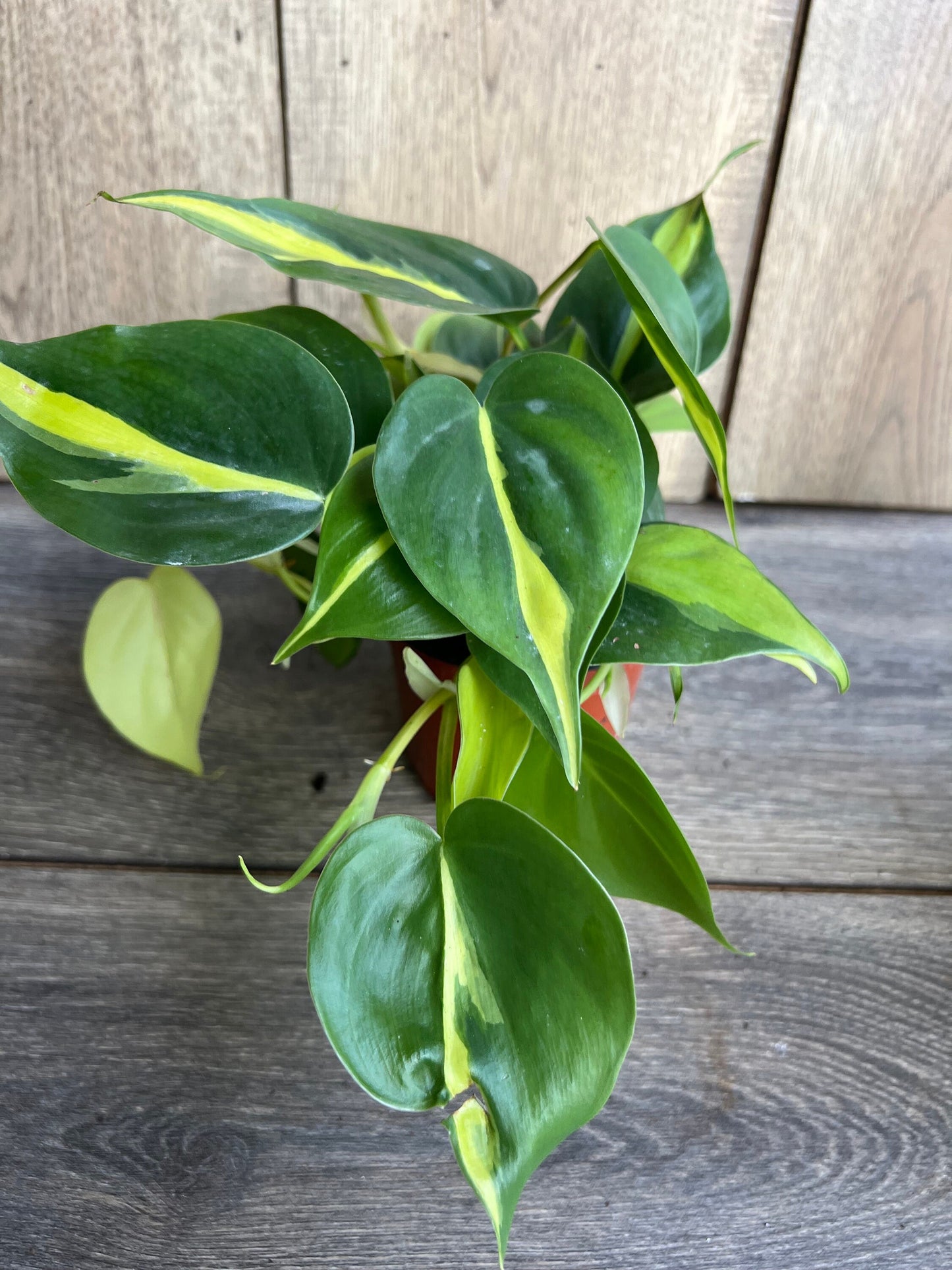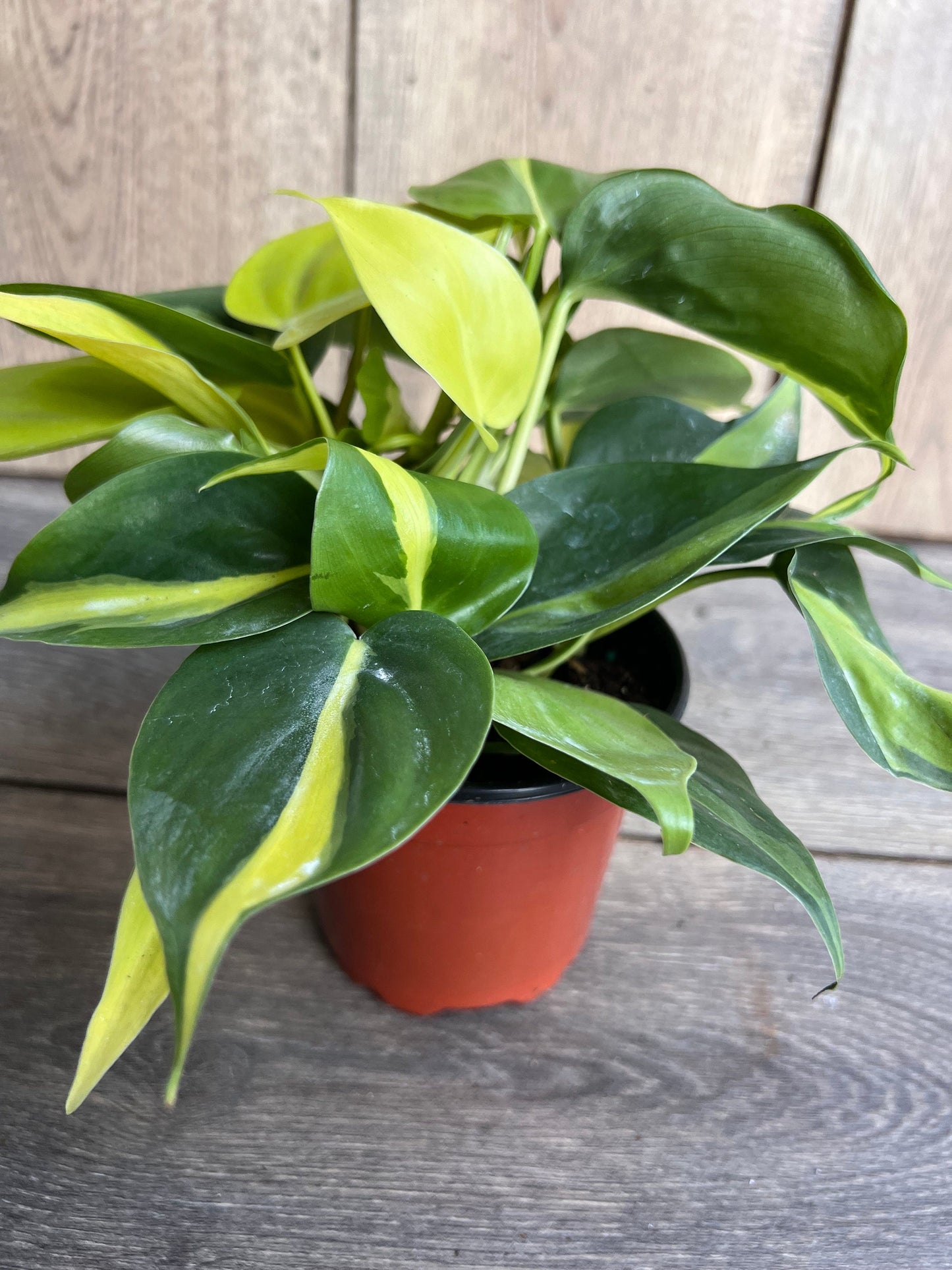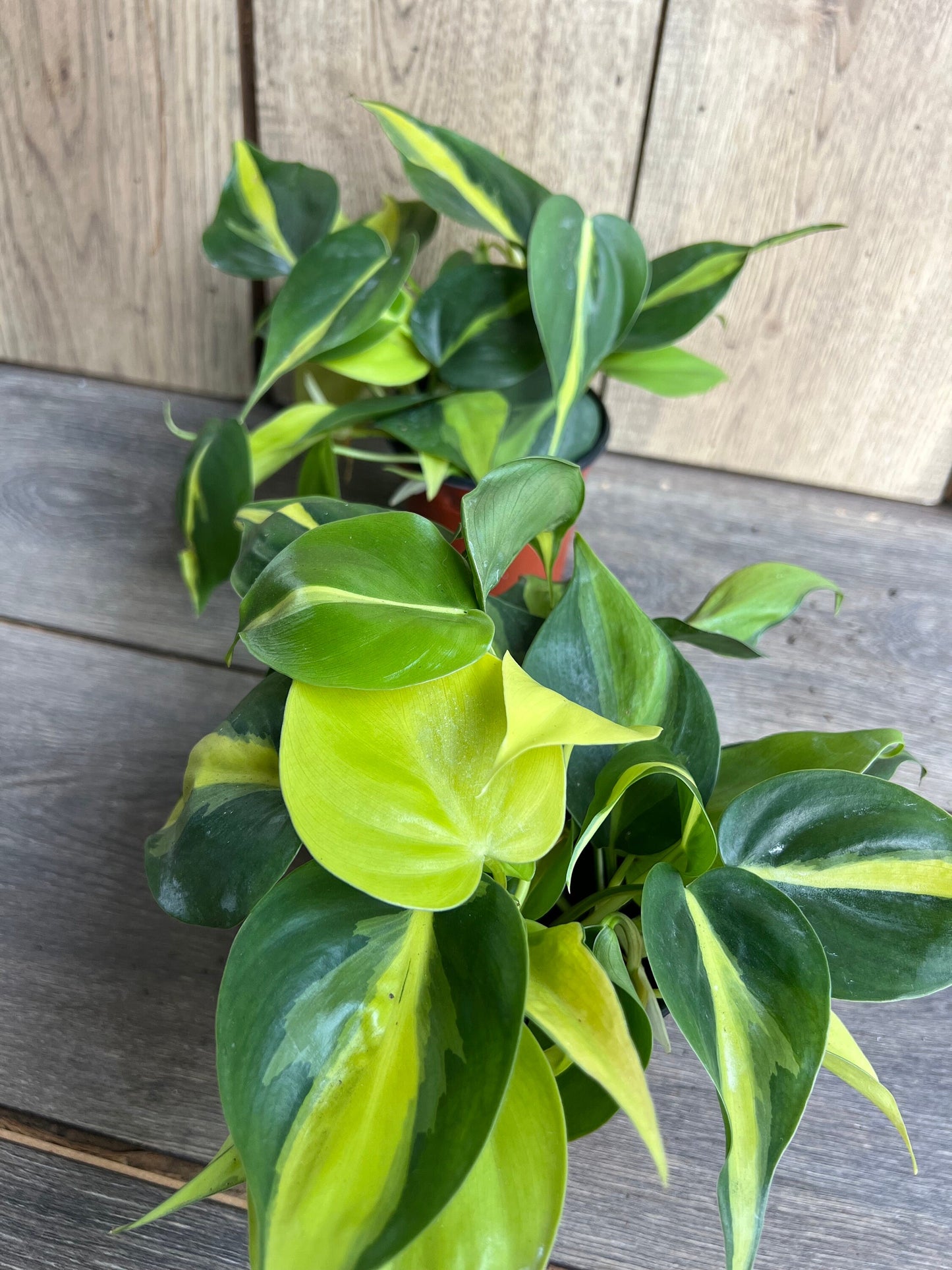1
/
of
7
Philodendron Brasil. in 4” pot, philodendron hederaceum,trailing plant, house plant, variegated heart shaped philodendron
Philodendron Brasil. in 4” pot, philodendron hederaceum,trailing plant, house plant, variegated heart shaped philodendron
Regular price
$16.53 USD
Regular price
$22.04 USD
Sale price
$16.53 USD
Unit price
/
per
Shipping calculated at checkout.
Couldn't load pickup availability
Note: You will receive Philodendron Brasil in 4" inches pot similar to the pictures.
Philodendron Brasil is a striking cultivar of Philodendron hederaceum, known for its heart-shaped leaves with vibrant green and yellow marbling. This fast-growing, low-maintenance plant is often used as a trailing or climbing plant, making it perfect for hanging baskets or trained up supports like moss poles. Native to Central and South America, it thrives in warm, humid conditions and prefers bright, indirect light. With its forgiving nature, Philodendron Brasil is ideal for beginner plant owners and has become a popular choice in indoor plant collections.
Key Care Tips for Philodendron Brasil
1. Light
- Bright, Indirect Light: Philodendron Brasil thrives in bright, indirect light, which enhances its yellow marbling. It can tolerate lower light, but variegation may diminish, and growth slows.
- Avoid Direct Sunlight: Direct sun can scorch the leaves, so it’s best to place the plant in a spot with filtered light.
2. Watering
- Moderate Watering: Water when the top 1–2 inches of soil feel dry. The plant prefers slightly moist soil but dislikes sitting in water. Ensure the pot has good drainage to avoid root rot.
- Avoid Waterlogging: Always empty the saucer after watering if the plant is in a decorative pot.
3. Soil
- Well-Draining Soil: Use a well-draining, loamy potting mix. A general indoor potting mix with added perlite or orchid bark works well to ensure aeration and prevent waterlogging.
- pH Preference: Philodendron Brasil prefers slightly acidic to neutral soil (pH 5.5–7.0).
4. Temperature
- Warm Temperatures: This plant thrives in temperatures between 65°F and 80°F (18°C–27°C). Avoid exposing it to cold drafts, air conditioners, or heating vents, as temperature fluctuations can cause stress.
- Stable Temperature: Keep the plant in a stable, warm environment to promote healthy growth.
5. Humidity
- Moderate to High Humidity: While adaptable, Philodendron Brasil prefers humidity levels between 50-60%. If growing indoors in a dry environment, mist the leaves, use a humidity tray, or place it near other tropical plants to increase moisture levels.
6. Fertilizing
- Regular Feeding: During the growing season (spring and summer), feed the plant with a balanced, water-soluble fertilizer every 4-6 weeks. This helps promote healthy growth and vibrant foliage.
- Dilute Fertilizer: Always dilute the fertilizer to half strength to avoid nutrient burn, particularly for younger plants.
- Reduce in Fall/Winter: Fertilization should be reduced during fall and winter when the plant’s growth slows.
7. Pruning
- Maintain Shape: Prune yellowing or leggy growth to encourage a bushier, more compact shape. Light pruning promotes new growth.
- Control Size: Prune long vines or stems to control the plant’s size and appearance.
8. Support (Optional)
- Climbing or Trailing: Philodendron Brasil is a vining plant that can climb a moss pole, trellis, or other support for a more vertical growth habit. Alternatively, it can trail beautifully from a hanging basket or container.
- Moss Pole or Trellis: If you want to train it vertically, provide a support structure, using ties to guide the vines upward. This encourages larger leaves and more pronounced variegation.
9. Repotting
- Repotting Every 1-2 Years: Repot when the plant outgrows its pot or every couple of years to refresh the soil. Choose a pot 1-2 inches larger in diameter than the current one to allow for healthy root growth.
- Fresh Soil: Always use fresh, well-draining soil to prevent compaction and promote root health.
10. Pests and Diseases
- Pests: Philodendron Brasil is generally pest-resistant, but it can attract common indoor pests like spider mites, aphids, and mealybugs. Inspect the plant regularly and treat any infestations with insecticidal soap or neem oil.
- Root Rot: Overwatering or poor drainage can lead to root rot or fungal infections. Ensure proper drainage and avoid letting the soil stay soggy.
11. Signs of Stress
- Yellowing Leaves: Yellow leaves can indicate overwatering, poor drainage, or nutrient deficiencies. Adjust watering practices and check soil moisture.
- Brown Leaf Tips: Brown, crispy leaf tips are often a sign of underwatering, low humidity, or dry air. Increase watering or humidity to correct this.
- Leggy Growth: If the plant becomes leggy, it may not be receiving enough light. Move it to a brighter spot with indirect light to encourage denser growth.
Share
